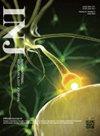下载PDF
{"title":"回复“间质性膀胱炎——子宫骶韧带减弱不能支持内脏丛和膀胱拉伸受体的结果,因此有可能治愈?”","authors":"Tomohiro Ueda","doi":"10.5213/inj.2142204.102","DOIUrl":null,"url":null,"abstract":"Copyright © 2022 Korean Continence Society This is an Open Access article distributed under the terms of the Creative Commons Attribution Non-Commercial License (https://creativecommons.org/licenses/by-nc/4.0/) which permits unrestricted non-commercial use, distribution, and reproduction in any medium, provided the original work is properly cited. Corresponding author: Tomohiro Ueda https://orcid.org/0000-0002-9611-5691 Department of Urology, Ueda Clinic, 6F CUBEOIKE, 599 Bano-cho, Anekojisagaru, Karasuma-dori, Nakagyo-ku, Kyoto 604-8172, Japan Email: tom328177@gmail.com Submitted: November 29, 2021 / Accepted after revision: June 9, 2022 To the editor, Interstitial cystitis/bladder pain syndrome (IC/BPS) is a heterogeneous disease consisting of distinct subgroups of patients who have different underlying pathophysiology. Thus, the proposal by Prof. Petros that loose or damaged uterosacral ligaments (USLs) may be an important etiology outside the bladder to induce or worsen the symptoms of IC/BPS due to altered urothelial receptor sensitivity is interesting. However, for the proper diagnosis and treatment of IC/BPS, it is necessary to first identify bladder-centric pathophysiology including Hunner lesions by using cystoscopy and also prove that identified bladder mucosal abnormalities are the causes of bladder pain, for example, as shown by pain reduction following intravesical lidocaine instillation in the recent dimethyl sulfoxide clinical trial in IC/BPS patients [1,2]. Then, in the case that bladdercentric pathophysiology is less likely to be involved in IC/BPS symptoms, outside-bladder etiology such as the lax USL discussed here should be considered as a cause of bladder symptoms in IC/BPS patients. There will be no bright future for IC/ BPS without the following 3 steps: (1) understanding the symptoms, (2) detecting abnormal findings in or outside the bladder, and (3) verifying that the abnormality is the cause of the symptoms. • Conflict of Interest: No potential conflict of interest relevant to this article was reported.","PeriodicalId":14466,"journal":{"name":"International Neurourology Journal","volume":"26 4","pages":"352"},"PeriodicalIF":1.8000,"publicationDate":"2022-12-01","publicationTypes":"Journal Article","fieldsOfStudy":null,"isOpenAccess":false,"openAccessPdf":"https://ftp.ncbi.nlm.nih.gov/pub/pmc/oa_pdf/fb/8e/inj-2142204-102.PMC9816451.pdf","citationCount":"0","resultStr":"{\"title\":\"Reply to \\\"Interstitial Cystitis - A Consequence of Weakened Uterosacral Ligaments Failing to Support Visceral Plexuses and Bladder Stretch Receptors and Therefore Potentially Curable?\\\"\",\"authors\":\"Tomohiro Ueda\",\"doi\":\"10.5213/inj.2142204.102\",\"DOIUrl\":null,\"url\":null,\"abstract\":\"Copyright © 2022 Korean Continence Society This is an Open Access article distributed under the terms of the Creative Commons Attribution Non-Commercial License (https://creativecommons.org/licenses/by-nc/4.0/) which permits unrestricted non-commercial use, distribution, and reproduction in any medium, provided the original work is properly cited. Corresponding author: Tomohiro Ueda https://orcid.org/0000-0002-9611-5691 Department of Urology, Ueda Clinic, 6F CUBEOIKE, 599 Bano-cho, Anekojisagaru, Karasuma-dori, Nakagyo-ku, Kyoto 604-8172, Japan Email: tom328177@gmail.com Submitted: November 29, 2021 / Accepted after revision: June 9, 2022 To the editor, Interstitial cystitis/bladder pain syndrome (IC/BPS) is a heterogeneous disease consisting of distinct subgroups of patients who have different underlying pathophysiology. Thus, the proposal by Prof. Petros that loose or damaged uterosacral ligaments (USLs) may be an important etiology outside the bladder to induce or worsen the symptoms of IC/BPS due to altered urothelial receptor sensitivity is interesting. However, for the proper diagnosis and treatment of IC/BPS, it is necessary to first identify bladder-centric pathophysiology including Hunner lesions by using cystoscopy and also prove that identified bladder mucosal abnormalities are the causes of bladder pain, for example, as shown by pain reduction following intravesical lidocaine instillation in the recent dimethyl sulfoxide clinical trial in IC/BPS patients [1,2]. Then, in the case that bladdercentric pathophysiology is less likely to be involved in IC/BPS symptoms, outside-bladder etiology such as the lax USL discussed here should be considered as a cause of bladder symptoms in IC/BPS patients. There will be no bright future for IC/ BPS without the following 3 steps: (1) understanding the symptoms, (2) detecting abnormal findings in or outside the bladder, and (3) verifying that the abnormality is the cause of the symptoms. • Conflict of Interest: No potential conflict of interest relevant to this article was reported.\",\"PeriodicalId\":14466,\"journal\":{\"name\":\"International Neurourology Journal\",\"volume\":\"26 4\",\"pages\":\"352\"},\"PeriodicalIF\":1.8000,\"publicationDate\":\"2022-12-01\",\"publicationTypes\":\"Journal Article\",\"fieldsOfStudy\":null,\"isOpenAccess\":false,\"openAccessPdf\":\"https://ftp.ncbi.nlm.nih.gov/pub/pmc/oa_pdf/fb/8e/inj-2142204-102.PMC9816451.pdf\",\"citationCount\":\"0\",\"resultStr\":null,\"platform\":\"Semanticscholar\",\"paperid\":null,\"PeriodicalName\":\"International Neurourology Journal\",\"FirstCategoryId\":\"3\",\"ListUrlMain\":\"https://doi.org/10.5213/inj.2142204.102\",\"RegionNum\":3,\"RegionCategory\":\"医学\",\"ArticlePicture\":[],\"TitleCN\":null,\"AbstractTextCN\":null,\"PMCID\":null,\"EPubDate\":\"\",\"PubModel\":\"\",\"JCR\":\"Q3\",\"JCRName\":\"UROLOGY & NEPHROLOGY\",\"Score\":null,\"Total\":0}","platform":"Semanticscholar","paperid":null,"PeriodicalName":"International Neurourology Journal","FirstCategoryId":"3","ListUrlMain":"https://doi.org/10.5213/inj.2142204.102","RegionNum":3,"RegionCategory":"医学","ArticlePicture":[],"TitleCN":null,"AbstractTextCN":null,"PMCID":null,"EPubDate":"","PubModel":"","JCR":"Q3","JCRName":"UROLOGY & NEPHROLOGY","Score":null,"Total":0}
引用次数: 0
引用
批量引用
Reply to "Interstitial Cystitis - A Consequence of Weakened Uterosacral Ligaments Failing to Support Visceral Plexuses and Bladder Stretch Receptors and Therefore Potentially Curable?"
Copyright © 2022 Korean Continence Society This is an Open Access article distributed under the terms of the Creative Commons Attribution Non-Commercial License (https://creativecommons.org/licenses/by-nc/4.0/) which permits unrestricted non-commercial use, distribution, and reproduction in any medium, provided the original work is properly cited. Corresponding author: Tomohiro Ueda https://orcid.org/0000-0002-9611-5691 Department of Urology, Ueda Clinic, 6F CUBEOIKE, 599 Bano-cho, Anekojisagaru, Karasuma-dori, Nakagyo-ku, Kyoto 604-8172, Japan Email: tom328177@gmail.com Submitted: November 29, 2021 / Accepted after revision: June 9, 2022 To the editor, Interstitial cystitis/bladder pain syndrome (IC/BPS) is a heterogeneous disease consisting of distinct subgroups of patients who have different underlying pathophysiology. Thus, the proposal by Prof. Petros that loose or damaged uterosacral ligaments (USLs) may be an important etiology outside the bladder to induce or worsen the symptoms of IC/BPS due to altered urothelial receptor sensitivity is interesting. However, for the proper diagnosis and treatment of IC/BPS, it is necessary to first identify bladder-centric pathophysiology including Hunner lesions by using cystoscopy and also prove that identified bladder mucosal abnormalities are the causes of bladder pain, for example, as shown by pain reduction following intravesical lidocaine instillation in the recent dimethyl sulfoxide clinical trial in IC/BPS patients [1,2]. Then, in the case that bladdercentric pathophysiology is less likely to be involved in IC/BPS symptoms, outside-bladder etiology such as the lax USL discussed here should be considered as a cause of bladder symptoms in IC/BPS patients. There will be no bright future for IC/ BPS without the following 3 steps: (1) understanding the symptoms, (2) detecting abnormal findings in or outside the bladder, and (3) verifying that the abnormality is the cause of the symptoms. • Conflict of Interest: No potential conflict of interest relevant to this article was reported.


